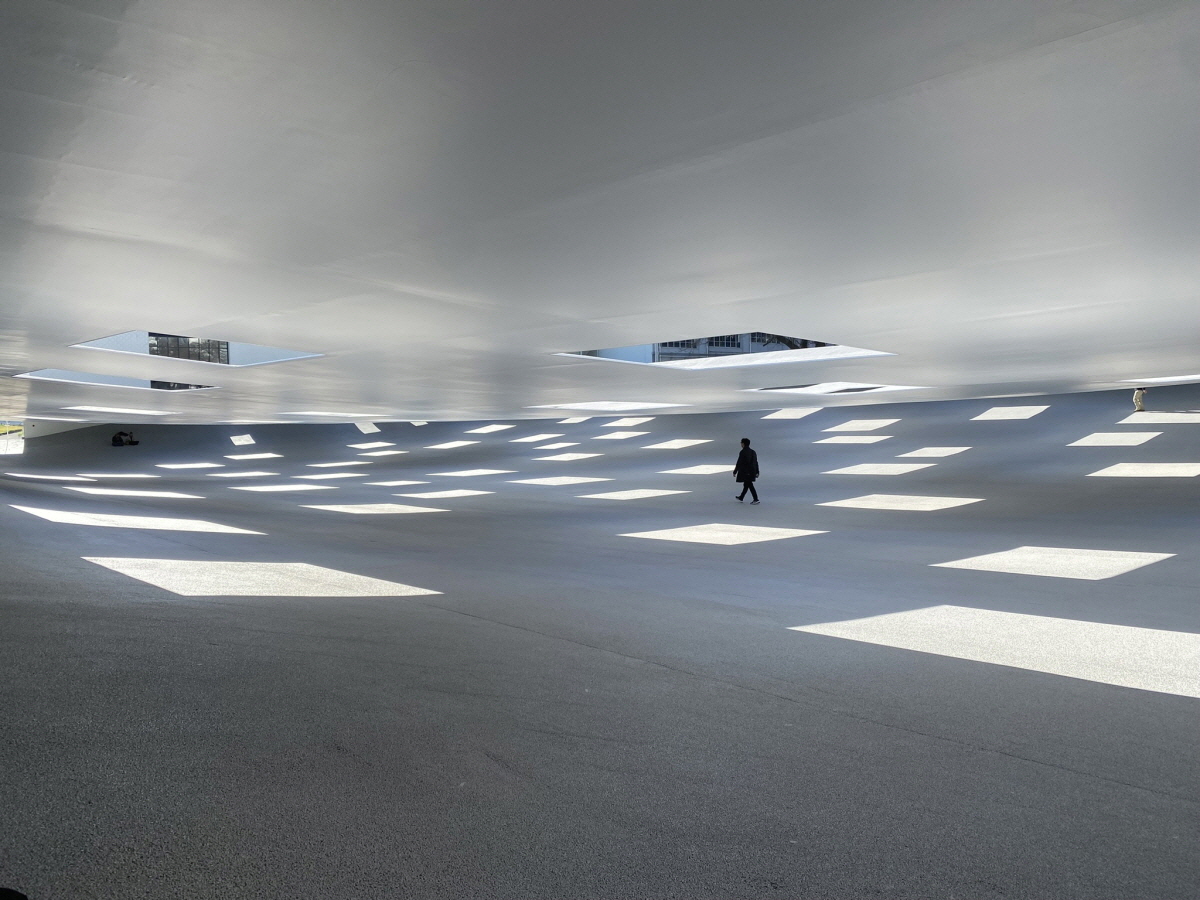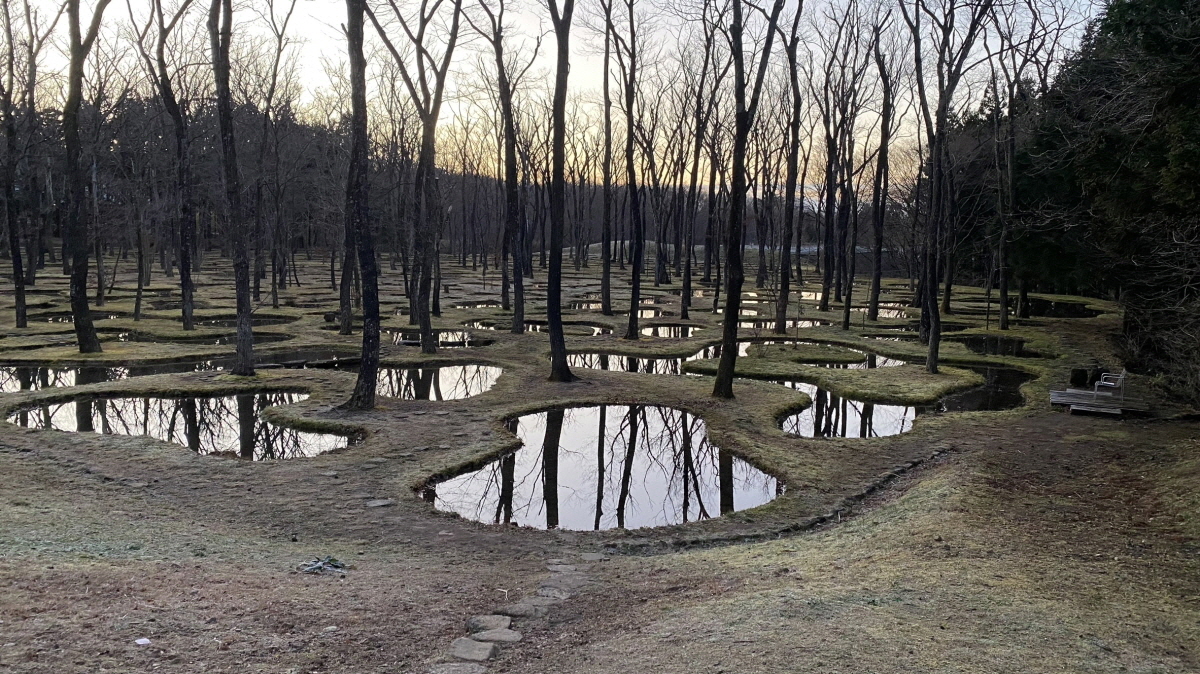SPACE January 2024 (No. 674)


©Kim Jeoungeun
On Dec. 2, 2023, as part of the ‘2023 International Architects Invitational Lectures’ held by Architecture Design Institute of Korea, a special lecture by Ishigami Junya (principal, junya.ishigami+associates) was held at the Art Sonje Center. Ishigami graduated from Tokyo University of the Arts, learned practical skills at SANAA (co-principals, Sejima Kazuyo, Nishizawa Ryue), and established junya.ishigami+associates, gaining international fame through original and innovative works that redefine the relationship between nature and architecture.
In his lecture he introduced nine projects as an attempt to connect nature to landscape, and shared his architectural philosophy. The lecture started with his first project, Kanagawa Institute of Technology (KAIT) Workshop (2008). It is a single-storey building, measuring approximately 2,000m2 GFA, with no inner walls. The roof is supported with 305 thin pillars in an irregular arrangement. These pillars create ambiguous boundaries, allowing users to experience the space in a flexible way. Inside, there are no rooms with specific functions or a set circulation, and it is open to the outer areas through glass, creating the feeling of being in a forest. He explained that the relationships between humans and nature, space, and the environment overlap, all of which interlocks to create a landscape.
The Art Biotop Water Garden (2018), introduced after the KAIT Workshop, is a new garden project created by relocating hundreds of trees that were cut down to build a hotel at a nearby site. Prior to the development of the hotel was a greenfield site (farm land) with many old trees and an abundance of water flowing in from the waterways. Taking this environment into account, he studied and relocated 310 trees, while also designing a new garden with 160 ponds. This project exemplifies Ishigami’s belief that human intervention, namely architecture, can improve a landscape without damaging or disrupting it.
Next, he introduced three projects currently in progress in mainland China. The Bailuwan Chocolate Art Museum (2016 –) is a project which creates an artificial terrain by building a 1km-long bridge-shaped building over a lake. As water from the lake enters the building through gaps in the glass windows, it redefines the relationship between the inside and outside. Forest Kindergarten (2022) intends to be an architectural space that sparks the imagination while increasing contact with nature through a space tailored to children’s scale and a continuous outdoor space. Chapel of the Valley (2018 –) is a narrow, long, curved religious facility designed informed by the defining characteristics of the land
located in the canyon, to maximize human experience in the vast nature.
Other than the previously mentioned projects, he also introduced projects such as the Polytechnic Museum in Moscow (2019), and House & Restaurant (2022) (covered in SPACE No. 660), digging out the basement of a building to create a plaza connected to the city and creating residential and commercial spaces that offered a primitive cave-like feel, in order to devise experimental spaces that forge new relationships with the environment.
In the question and answer session that followed the presentation, one point was raised concerning whether architecture, as an artifact, inevitably has a negative impact on the environment. Ishigami replied that there is no longer a clear distinction between the artificial and the natural, and that the key is to harmonise nature and the human world with the aim of minimising any potential impact.





